Top10
Mastering the Art of Communicating Your Business Strategy
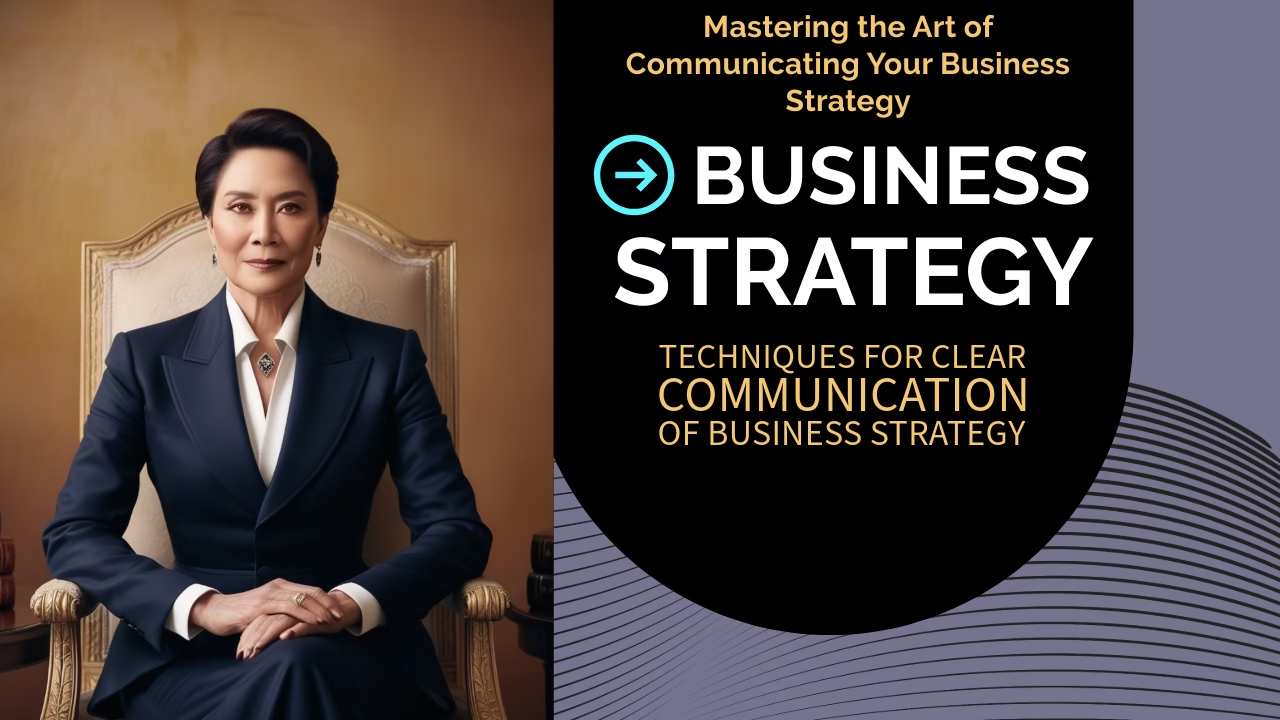
In today’s dynamic business landscape, a well-articulated strategy serves as the compass guiding an organization’s trajectory. However, a recurring challenge faced by leaders is ensuring that their strategic vision resonates with and is comprehended by their workforce. Surveys consistently reveal that a significant proportion of employees struggle to recall or grasp their company’s strategic priorities, despite concerted efforts by top management to disseminate this information.
The root cause of this disconnect often lies in the lack of contextual clarity surrounding the communicated strategy. Just as the sleepy flight engineer in the anecdote misinterpreted his captain’s innocuous remark due to a lack of shared context, employees may misunderstand or fail to appreciate the rationale behind strategic decisions when the underlying context remains opaque.
Corporate leaders, armed with years of experience and a wealth of data, grapple with the inherent challenge of conveying the implicit knowledge and deliberations that shape their strategic choices. Consequently, they find themselves unable to fully explicate the context underpinning their decisions, leaving employees with an incomplete picture.
To bridge this gap and foster strategic alignment, leaders must adopt innovative approaches to elucidate the context surrounding their organization’s strategic direction. By presenting rejected alternatives, linking decisions to the company’s purpose, and involving employees in strategy development, leaders can empower their workforce with the contextual understanding necessary to embrace and execute the organizational strategy effectively.

Illuminating Rejected Alternatives: Unveiling the Strategic Rationale
One powerful technique for providing contextual clarity is to shed light on the alternatives considered and ultimately rejected during the strategy formulation process. By explicitly communicating the options that were evaluated and the reasons for their dismissal, leaders can offer invaluable insights into the thought process and rationale behind the chosen strategic path.
For instance, the late John Bachmann, former managing partner of Edward Jones, a prominent U.S. brokerage firm, articulated their strategy by contrasting it with the approaches taken by competitors. He highlighted their focus on individual investors in rural America, their commitment to transparent and safe products, their avoidance of manufacturing in-house mutual funds, and their preference for small, community-based offices staffed by single investment representatives – all in stark contrast to the practices of their industry peers.
Similarly, pharmaceutical giant Roche contextualizes its strategic decision to concentrate on prescription medicines and diagnostics by underscoring its conscious choice not to invest in sectors such as generics, biosimilars, over-the-counter medicines, and medical devices.
By illuminating the rejected alternatives, leaders invite employees to understand not only the choices made but also the considerations that shaped those choices. This transparency fosters an environment conducive to seeking clarification, challenging assumptions, and engaging in constructive dialogue – ultimately leading to a deeper comprehension of the organizational strategy.
Anchoring Strategic Choices in Organizational Purpose
Another effective approach to enhancing contextual clarity is to explicitly link strategic decisions to the organization’s overarching purpose or goal. By demonstrating how each strategic choice aligns with and contributes to the realization of the company’s core mission, leaders can provide employees with a compelling rationale for understanding and embracing the chosen strategic direction.
Consider the example of DPG Media Group, a leading media company in Belgium and the Netherlands. In articulating their strategy, the Group Chairman, Christian Van Thillo, consistently anchored their decisions in the foundational assumption that people would continue to rely on professional media rather than citizen journalism, blogs, and influencers in the digital era. This assumption underpinned their strategic goal of delivering high-quality, professional journalism through digital channels.
By tying strategic choices, such as acquisitions and market focus, to this overarching goal, Van Thillo enabled employees to grasp the logic behind each decision without necessitating an exhaustive understanding of the deliberations involved. For instance, the decision to engage in acquisitions was framed as a means to compete effectively with digital giants like Google and Facebook for advertisers, while their geographic focus on Belgium and the Netherlands was justified by the need to maintain journalistic quality without overstretching resources.
Linking strategic choices to organizational purpose not only fosters contextual understanding but also reinforces the alignment between the company’s actions and its core values, further strengthening employee buy-in and commitment.
Inclusive Strategy Development: Fostering Shared Understanding
Involving employees in the strategy development process can be a powerful catalyst for fostering shared contextual understanding. By actively participating in strategic dialogues, workshops, and testing initiatives, employees gain first-hand exposure to the considerations, challenges, and trade-offs inherent in shaping the organization’s strategic direction.
Companies like Premium-Kollektiv, a German drinks producer, embrace an inclusive approach to strategy development, allowing any interested employee to initiate strategic dialogues through transparent, consensus-driven processes. As these dialogues deepen, more employees become engaged, collectively building a shared familiarity with the context surrounding the emerging strategy.
Similarly, at gaming company Valve, employees proposing strategic initiatives must persuade at least two colleagues to form a team, fostering collaboration and shared understanding from the outset. As the initiative progresses, more team members join, further broadening the contextual awareness.
Leveraging technology can also facilitate employee participation at scale. Bridgestone, a global tire manufacturer, is experimenting with AI-powered surveying to engage employees in interactive dialogues, efficiently gathering insights and perspectives to inform strategic planning.
By involving employees in the strategy development process, organizations not only tap into a diverse pool of ideas and perspectives but also cultivate a shared understanding of the context that shapes the eventual strategic choices. This collective comprehension enhances employee commitment and increases the likelihood of successful strategy execution.
Comprehensive Communication: Addressing Multiple Facets and Stakeholders
Effective strategy communication necessitates a comprehensive approach that addresses the multifaceted nature of strategic initiatives and engages a diverse range of stakeholders. Often, communication efforts narrowly focus on specific aspects of the strategy, such as competitive positioning or customer service, while overlooking other crucial elements like operational implications or regulatory considerations.
To counteract this fragmented approach, leaders should strive to develop a centralized repository of frequently asked questions and key messages tailored to different stakeholder groups. By collaborating with colleagues from various departments, leaders can ensure consistency in messaging while enhancing the breadth and depth of the information shared.
For instance, a chief of staff developed a central repository of strategic FAQs, highlighting the most pertinent points for each stakeholder group, ranging from employees and investors to regulators and community members. This comprehensive approach not only facilitated customized communication but also fostered a sense of ownership among contributors, further amplifying the consistency and efficacy of the strategic messaging.
Comprehensive communication should encompass elements such as visualizing the organizational ambition, describing the desired impact on customers and society, challenging the status quo, instilling belief in the organization’s capabilities, outlining anticipated changes, and establishing relevant metrics for success. By addressing these multifaceted aspects, leaders can paint a holistic picture of the strategy, enabling stakeholders to grasp the rationale, implications, and expected outcomes comprehensively.
Personalizing the Strategic Narrative: Fostering Individual Relevance
While corporate-level strategy communication is essential, it often fails to resonate on a personal level, leaving employees uncertain about the specific implications and expectations for their roles. To counter this disconnect, leaders must tailor their messaging to highlight the personal relevance of the strategy for individual employees.
One effective approach is for leaders to model the implementation of the strategy through their own actions and decision-making processes. By prioritizing activities that enable the strategic direction and openly addressing areas of confusion or disagreement within their teams, leaders demonstrate their commitment to the strategy and foster alignment.
Additionally, leaders should articulate the new activities, capabilities, and behaviors required to execute the strategy successfully. Establishing pilot programs to roll out these changes can provide tangible examples and facilitate skill development through training, coaching, or mentoring initiatives.
Addressing nostalgia, fears, or resistance to change is also crucial when personalizing the strategic narrative. By proactively acknowledging and addressing concerns such as “We’ve tried this before, and it didn’t work” or “Our bureaucracy hinders our agility,” leaders can alleviate apprehensions and pave the way for smoother strategy adoption.
By making the strategy personal and relatable, leaders empower employees to understand their individual roles and contributions within the broader strategic context, fostering a sense of ownership and increasing the likelihood of successful execution.
Dynamic Communication: Tailoring the Message to the Moment
Effective strategy communication extends beyond static presentations or bland online statements. To truly engage and inspire stakeholders, leaders must embrace dynamic, situationally tailored communication approaches that capture attention and foster lasting recall.
One powerful technique is to map out the critical “imprintable” moments where strategy communication holds the greatest potential impact. These moments could include recruitment interviews, investor pitches, board meetings, town hall presentations, team huddles, or performance appraisals. By identifying these pivotal touchpoints, leaders can strategically emphasize specific messaging tailored to the audience and context.
For instance, when engaging with potential partner organizations, leaders may choose to highlight the organizational ambition and emerging opportunities, while in manager meetings, the focus could shift to outlining the strategic choices made and encouraging managers to make their own aligned decisions.
Selecting the appropriate communication tool or asset is equally crucial. In one-on-one conversations, a concise elevator pitch or a compelling anecdote can effectively convey the organization’s strategic advantage. For larger group settings, visualizations depicting strategic elements or stories illustrating how challenges will be overcome can resonate powerfully. In email communications, a succinct strategy summary, accompanied by frequently asked questions and personal reflections, can effectively disseminate the strategic narrative.
By tailoring the message and delivery method to the specific moment and audience, leaders can foster engagement, clarity, and lasting impact, ensuring that the strategy resonates across diverse stakeholder groups.
Empowering through Transparency: Fostering Collective Ownership
Traditionally, the responsibility for communicating strategy has been confined to a select few, often under the misguided belief that strategy is too complex for broader dissemination or that sharing detailed information could provide competitors with an advantage. However, this approach limits the opportunity for employees, partners, suppliers, and other stakeholders to contribute to, advocate for, and deliver on the organizational strategy.
To foster collective ownership and amplify strategy execution, leaders must embrace transparency and empower stakeholders with comprehensive strategic information. This can be achieved by sharing as much of the strategy as possible, including critical decisions, underlying assumptions, and acknowledged uncertainties. By providing a centralized repository of strategic assets and information, leaders enable stakeholders to self-select the aspects most relevant to their interests and roles.
Transparency should extend to communicating progress honestly, sharing updates on successes, challenges, and inviting stakeholders to contribute ideas and solutions. This open dialogue not only enhances understanding but also cultivates a sense of shared responsibility for the strategy’s success.
While it may be tempting to restrict certain details to avoid overwhelming stakeholders or protecting commercial interests, leaders should exercise discretion judiciously. By creating open channels for feedback, questions, and idea-sharing, organizations can harness the collective intelligence and commitment of their stakeholders, enhancing the strategy’s resilience and adaptability.
Systematic and Flexible Communication: Embedding Strategic Alignment
Effective strategy communication is not a one-time event but rather an ongoing, systematic process that must adapt to evolving circumstances and stakeholder needs. To embed strategic alignment and foster sustained commitment, leaders must adopt a systematic yet flexible approach to communication.
This involves mapping out clear sequences of communications tailored to different stakeholder groups and pivotal moments, ensuring consistency and clarity of messaging over time. Research suggests that it takes approximately two months to embed a new habit, even with optimal communication and incentives. Consequently, a sustained effort with strategic repetition is essential for lasting impact.
Actively soliciting participation and feedback through thoughtful questioning can help identify and overcome obstacles to strategy execution. Posing questions such as “What can we do to accelerate the desired changes?” or “What barriers can we remove to make our lives easier?” can yield valuable insights and foster a sense of collective ownership.
Monitoring weak signals of change, both within and external to the organization, is crucial for adapting communication content and approaches. For instance, shifts in consumer sentiment or aggressive competitor activity may necessitate adjustments to the strategic narrative, reinforcing its resilience or highlighting the rationale for pivots.
Surfacing and highlighting success stories that exemplify the strategy in action can reinforce key messages, maintain stakeholder interest, and build commitment to the strategic direction. By celebrating and sharing these successes, leaders can create a virtuous cycle of alignment and motivation.
Elevating Strategy Communication for Collective Success
In today’s rapidly evolving business landscape, effective strategy communication has emerged as a critical differentiator, enabling organizations to harness the collective power of their stakeholders in pursuit of shared goals. By embracing contextual clarity, personal relevance, dynamic delivery, and transparent engagement, leaders can foster a deep understanding and collective ownership of the organizational strategy.
Whether by illuminating rejected alternatives, anchoring choices in organizational purpose, involving employees in strategy development, or tailoring communication to pivotal moments, the approaches outlined in this article provide a roadmap for leaders seeking to elevate their strategy communication efforts.
Ultimately, by fostering a shared understanding of the strategic context, leaders can unlock the full potential of their workforce, empowering employees to make informed decisions, contribute innovative ideas, and collectively drive the organization’s success in an ever-changing business environment.
Analysis
India’s Strategic Restraint: Why the Conflict With Pakistan May Stay Contained
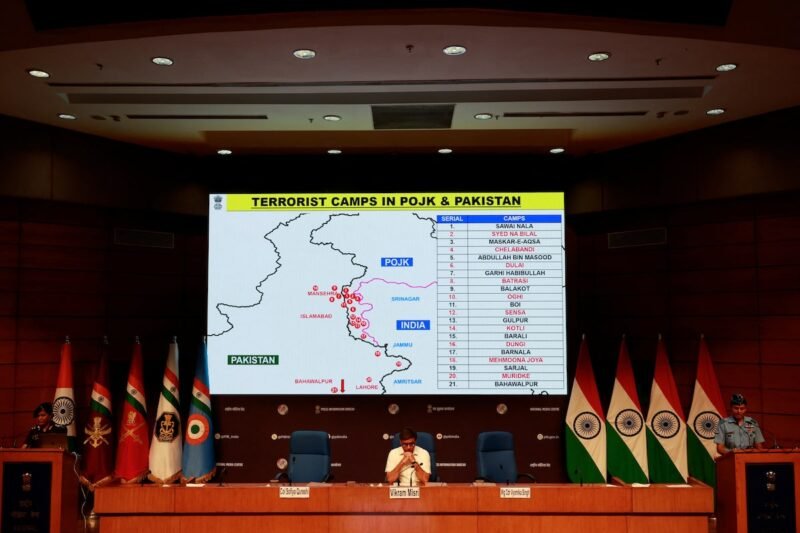
India’s calibrated strikes and disciplined messaging show a mature, responsible power at work—unlike Pakistan’s volatile, military-driven reaction model.
Despite rising tensions along the Line of Control, there remains cautious optimism that the current Indo-Pak standoff will not escalate into full-scale war. The reason? India’s strategic restraint, precision targeting, and clear signalling.
India has once again demonstrated that it is the adult in the room, choosing to strike at terrorist infrastructure rather than military installations. This is not just about optics; it reflects a deeply calculated effort to climb the escalation ladder responsibly—asserting strength without triggering a conventional or nuclear conflict.
In a world where one miscalculation could spark uncontrollable fallout, India’s approach shows the discipline of a power that understands the cost of uncontrolled aggression.
Striking With Precision, Not Provocation
India’s official statements have carefully emphasised that only terrorist camps were targeted—not Pakistani army posts or civilian infrastructure. This messaging is important. It reinforces India’s position as a nation responding to terror, not provoking a war. The real strategic brilliance lies in showing resolve without inviting escalation.
Compare this with Pakistan’s lack of institutional coordination, where military narratives often overrun diplomatic rationality. Civilian leadership appears sidelined, while the military establishment defaults to outdated tactics that blur the line between state and proxy action.
Escalation Is Always a Risk—But Not Because of India
Yes, escalation remains a concern. In a nuclearized region, even limited tit-for-tat actions can spiral out of control if left unchecked. But in this case, India has done the hard work of containing the battlefield—geographically, militarily, and diplomatically.
The wildcard lies not in New Delhi’s restraint, but in Islamabad’s desperation. With minimal global pressure and growing internal instability, Pakistan may choose provocation over prudence—especially to appease domestic constituencies or distract from its collapsing economy.
Nationalism: Constructive in Delhi, Destructive in Islamabad
Both India and Pakistan have vocal nationalist elements. But while India’s nationalism fuels strategic modernization, Pakistan’s often serves to deflect from governance failures and economic freefall.
India’s national security doctrine under Prime Minister Modi has evolved—it is now about precision, deterrence, and global positioning, not loud sabre-rattling.
Kashmir: The Litmus Test of Containment
Historically, Kashmir has been the ignition point of Indo-Pak confrontations. As one analyst put it, “In the bad old days… casualties across the Kashmir border were routine.” Today, there are still flare-ups, but the fact that attacks remain localized and don’t target core military installations is evidence that India is actively managing escalation.
This measured response is not just good military policy—it’s smart global diplomacy.

Conclusion: Strategic Maturity Wins Wars Before They Start
India’s actions speak louder than slogans. It has chosen restraint over recklessness, surgical precision over symbolic aggression, and long-term strategic advantage over short-term political gain.
If the conflict remains contained—and there’s every reason to believe it will—it will be because India chose wisdom when it had the capacity for war.
#IndiaPakistanTensions
#StrategicRestraint
#operationsindoor
#IndiaFirst
#SouthAsiaSecurity
#KashmirConflict
#PrecisionStrike
Business Story
Collapse from Within: How Strategic Pressure is Bringing Down Pakistan
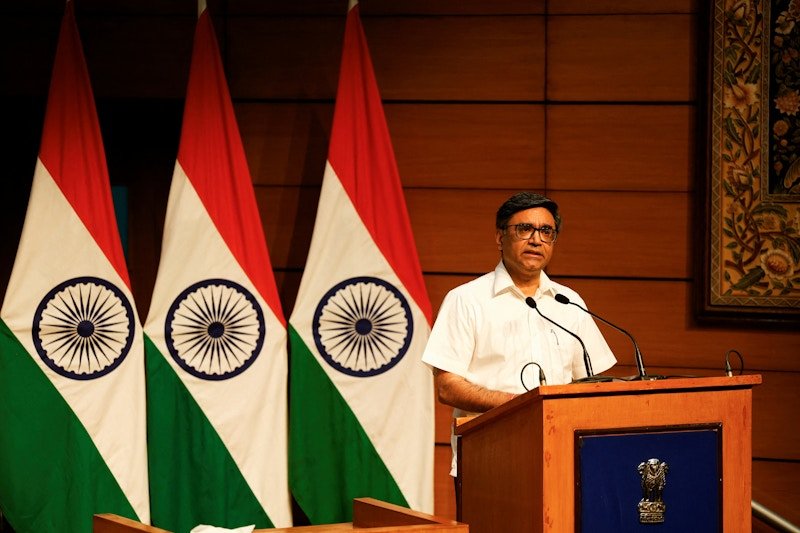
While India quietly ratchets up the temperature with Operation Sindoor, Pakistan is being beset by internal crises of economic collapse, political turbulence, and spreading extremism—potentially more devastating than foreign strife.
A Cover Story Exclusive Analysis
A new model of warfare is unfolding across South Asia—less about tanks and missiles, and more about sustained pressure and strategic endurance. Through the classified contours of Operation Sindoor, India appears to be conducting a campaign not aimed at winning a conventional war, but at breaking its adversary from the inside out.
This shift from deterrence to disruption signals that New Delhi has adopted a doctrine designed not just to protect Indian interests, but to expose the fault lines within Pakistan’s fragile internal structure.
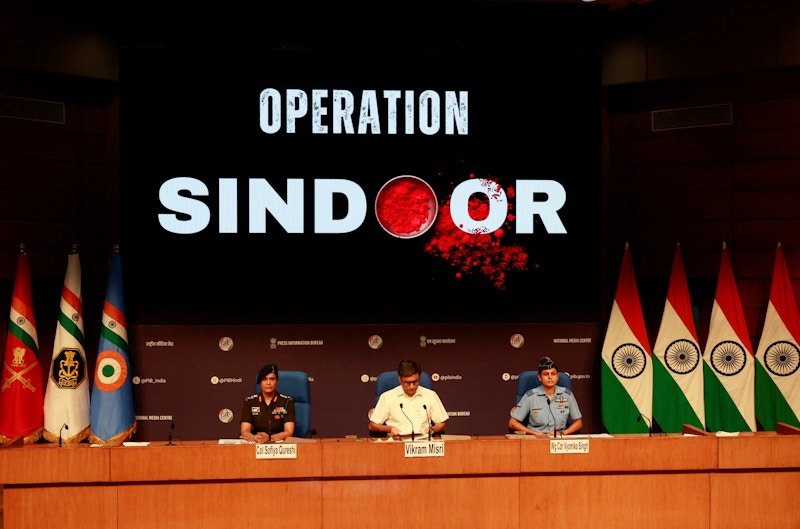
The Economic Collapse Engineered by Containment
Pakistan today faces an economic cliff edge. Foreign reserves have dwindled to dangerously low levels, inflation is galloping, and the rupee is plunging. The economy, held together by foreign aid and IMF bailouts, now resembles a dependency loop rather than a recovery path.
India’s diplomatic maneuvering—especially its role in keeping Pakistan on the FATF grey list—has further eroded investor confidence and choked access to global financing. Foreign direct investment has dried up, credit ratings are sinking, and business sentiment is dismal. As a result, Pakistan’s sovereign debt outlook remains perilously close to default.
While India strengthens trade ties with the Gulf, ASEAN, and Central Asian markets, Pakistan finds itself increasingly shut out of regional economic integration. China, long viewed as Islamabad’s economic backer, has cooled its enthusiasm, slowing CPEC disbursements and project activity due to political risk and repayment concerns.
Political Tensions: The Unstable Core
This external pressure is now cascading into Pakistan’s political institutions. Civil-military relations—already fragile—are under renewed stress. The military, traditionally the power broker in Pakistani politics, faces rising scrutiny from a public mired in economic pain and disillusionment. Civilian leaders, on the other hand, are stuck between appeasing the military and avoiding a total fiscal collapse.
These tensions have historical precedents. Coups and political resets have occurred under far less pressure. With public dissatisfaction growing, especially in urban and youth-heavy demographics, the risk of mass unrest or a military reshuffle is no longer hypothetical—it’s plausible.
The Extremism Wildcard
Strategic external stress often creates internal vacuums. In Pakistan’s case, this could lead to a reawakening of extremist forces, particularly in border regions like Balochistan or Khyber Pakhtunkhwa. As the state grapples with governance paralysis and economic rot, militant outfits may exploit the chaos, rebuilding networks and regaining territorial influence.
This not only presents a grave national security challenge, but also jeopardizes Pakistan’s fragile standing with Western governments, which have grown increasingly intolerant of state-adjacent extremism.
The Real Battlefield Is Within
Operation Sindoor may never be officially confirmed, but its ripple effects are visible far beyond India’s borders. The operation represents a strategy of non-linear conflict—one that doesn’t aim to topple tanks, but to topple regimes by amplifying their internal contradictions.
For Pakistan, the war is already underway—and it’s not being fought in Kashmir or along the LOC. It’s being fought inside its financial markets, its energy grids, its institutions, and on its restless streets.
India, through measured but unrelenting pressure, may ultimately achieve strategic dominance not by invasion—but by erosion. If current trends persist, Pakistan’s eventual collapse could come not from outside attack, but from internal disintegration.
#OperationSindoor
#PakistanCrisis
#StrategicCollapse
#HybridWarfare
#EconomicWarfare
#SouthAsiaSecurity
Business Story
Why CEOs Should Think Twice Before Using AI to Write Messages

While generative AI can streamline executive communications, overreliance may erode authenticity and employee trust.
The Allure of AI in Executive Communication
In today’s fast-paced corporate environment, CEOs are inundated with responsibilities, with a significant portion of their time dedicated to crafting communications. Generative AI offers a tempting solution: the ability to produce polished messages swiftly, maintaining a consistent tone and style. The efficiency gains are undeniable, allowing leaders to focus on strategic decision-making while delegating routine communications to AI tools.
The Risk of Eroding Authenticity
Despite the advantages, there’s a growing concern about the authenticity of AI-generated messages. Employees value genuine communication from their leaders, seeking messages that reflect real emotions, thoughts, and intentions. When communications are perceived as impersonal or formulaic, it can lead to skepticism and a sense of disconnect. The subtle nuances, personal anecdotes, and spontaneous reflections that characterize human communication are challenging for AI to replicate convincingly.
Employee Perception and Trust
Trust is the cornerstone of effective leadership. If employees suspect that messages are AI-generated, it may lead to doubts about the leader’s engagement and sincerity. This perception can be detrimental, especially during times of organizational change or crisis when authentic leadership communication is paramount. Employees may question the leader’s commitment or feel undervalued, impacting morale and engagement.
The Importance of Transparency
Transparency about the use of AI in communications is crucial. Leaders should disclose when AI tools assist in drafting messages, emphasizing that while technology aids in efficiency, the sentiments and decisions conveyed are genuinely theirs. This approach maintains trust and demonstrates a commitment to authenticity, even when leveraging technological tools.
Best Practices for Integrating AI in CEO Communications
- Use AI as an Assistant, Not a Replacement: Employ AI to draft initial versions or handle routine communications, but ensure that final messages are reviewed and personalized by the CEO.
- Maintain a Personal Touch: Incorporate personal experiences, reflections, and emotions that AI cannot replicate to preserve the human element in communications.
- Be Transparent: Inform employees when AI tools are used in communication processes, reinforcing that the leadership remains actively engaged.
- Solicit Feedback: Encourage employees to share their perceptions of communications to gauge the effectiveness and authenticity of messages.
- Continuous Evaluation: Regularly assess the impact of AI-assisted communications on employee trust and engagement, making adjustments as necessary.
Conclusion
While generative AI presents opportunities to enhance efficiency in executive communications, it’s imperative for CEOs to balance technological benefits with the need for authentic, human connection. By thoughtfully integrating AI tools and maintaining transparency, leaders can uphold trust and foster a culture of openness and sincerity within their organizations.
#AILeadership
#ExecutiveCommunication
#AuthenticLeadership
#EmployeeEngagement
#TrustInLeadership
#GenerativeAI
#CorporateCommunication
#LeadershipTransparency
#HumanTouchInAI
#FutureOfWork
-
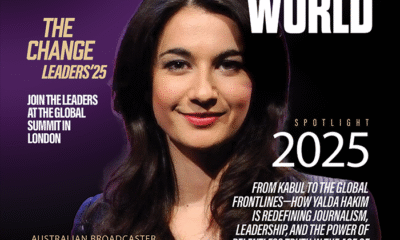
 Leaders Story6 months ago
Leaders Story6 months agoThe Cover Story World Best Leaders 2025, Yalda Hakim: The Voice That Can’t Be Ignored
-

 Business Story6 months ago
Business Story6 months agoAmrit Acharya: Building the Infrastructure of a New World
-

 Brand Story1 year ago
Brand Story1 year agoThe Best 30 Emerging Indian Brands: Innovators Shaping the Future
-

 Business Story6 months ago
Business Story6 months agoAI Integration in Indian SMEs: Revolutionizing Traditional Business Models
-

 Business Story6 months ago
Business Story6 months agoMAG Signs Strategic Partnership with MultiBank Group to Tokenize $3 Billion Real Estate Assets
-

 Business Story6 months ago
Business Story6 months agoRemote Work Evolution: How Indian Corporates Are Redefining Workspaces
-

 Business Story6 months ago
Business Story6 months agoEducation Technology: Bridging Learning Gaps in the Digital Age
-

 News Shots6 months ago
News Shots6 months agoWhat is the image of the Virgin Mary near the altar?













